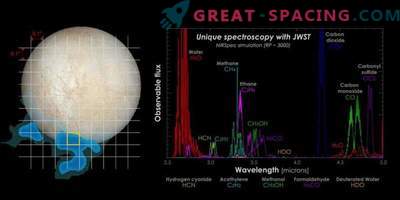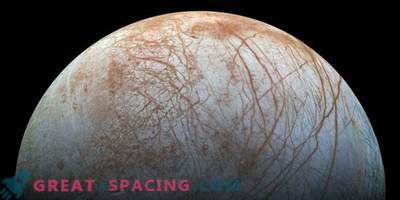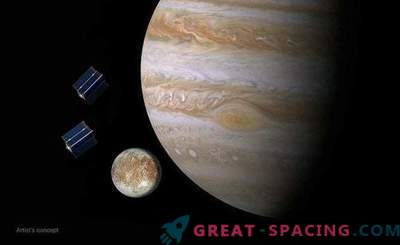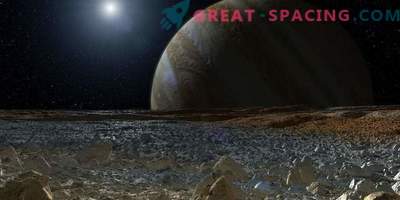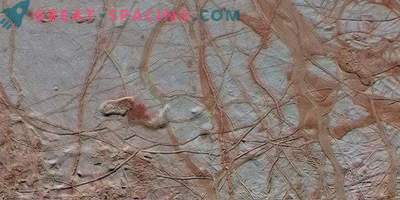
The icy moon of Jupiter Europe is one of the most intriguing worlds to explore. Therefore, NASA scientists are developing the Europa Clipper spacecraft, which will reveal all the secrets.
Europa Clipper plan to launch in 2023, then go to the Jupiter system and perform 40 close spans around the satellite. Upon arrival, the spacecraft will collect valuable information about the geology of the moon, its composition and the hidden inland ocean. But before creating a ship you need to go through the final review.
It makes no sense to look for life on the surface of an icy satellite, since it (if it exists) hides in the internal oceans, where the gravitational forces of a neighboring planet hold water in a liquid state. All life we know needs water. In addition, geological activity on the seabed is able to provide chemicals to nourish microorganisms, and ice protects against dangerous radiation.
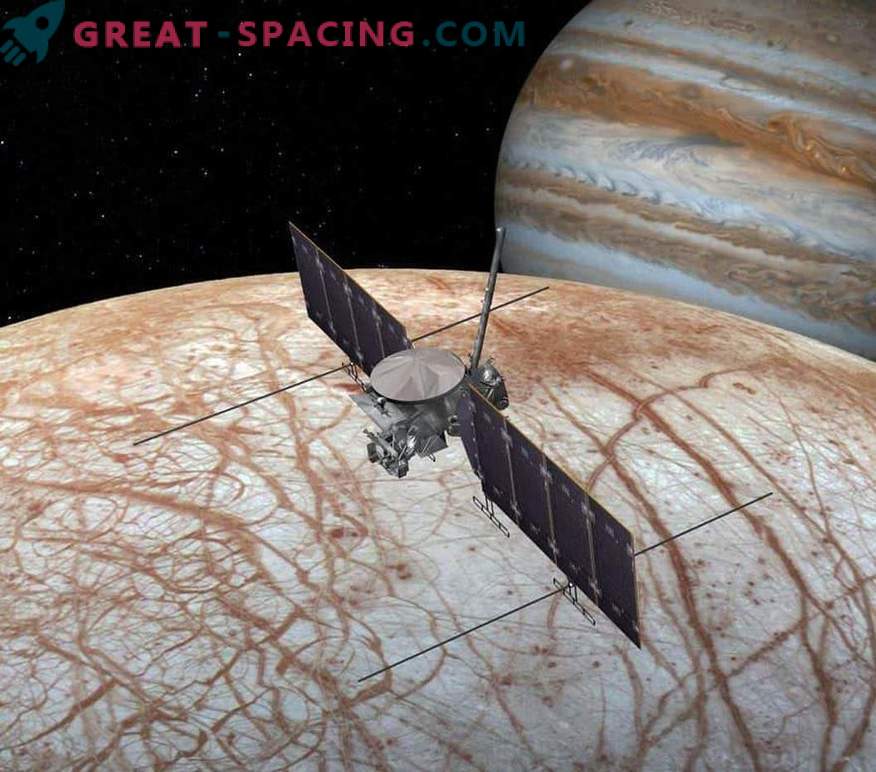
Artistic vision of the Europa Clipper spacecraft near the satellite Jupiter of Europe
The spacecraft is equipped with a set of 9 tools that allow you to find answers to the biggest puzzles and analyze the level of habitability in Europe. During the visit, the ship will fly at a distance of 25 km from the surface of the moon, which will provide not only valuable knowledge, but also high-quality images of the surface. The ice shell of the satellite hides many secrets. For example, the bark thickness is still a mystery. On the surface you can find a large number of ridges, the creation of which is difficult to explain. It seems that there is an unusual process of movement of ice fragments on the surface of Europe, but the mechanism is not clear.
The spacecraft will operate on solar energy (like Juno) in the cold confines of the Jupiter system. If there are water jets, the Europa Clipper can fly over them and take samples. Now it is important to properly plan the flight path. The ship will not be able to revolve around Europe directly, because it will receive an excessively large dose of radiation. Only complex mathematical calculations will determine the most appropriate option for the mission.
NASA has not yet agreed on the choice of rocket. They can use their own SLS launch system (3 years of flight) or use a SpaceX Falcon Heavy missile (5-6 years of flight). While thinking about a solution, the team focuses on the current obstacle: a study of the interaction of the individual components of the project. When this is dealt with, the program will enter phase C - counting the final budget and creating a real spacecraft. Problems may arise if the development of one part of the apparatus overtakes the others, which makes it difficult to assemble a finished model.







